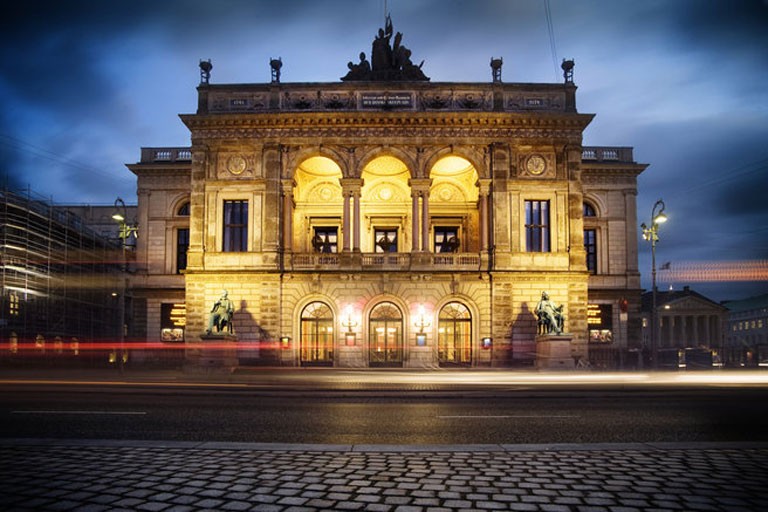
Opened -
Capacity -
Architect -
Style -
The Royal Theatre has been housed on Kongens Nytorv in Copenhagen since 1748, at first as the King’s and later as the whole country’s theatre. The first plans for a Danish national theatre were laid when Frederik V acceded to the throne in 1746. On 30th December 1746 the musician C.A. Thielo was granted a royal privilege in Copenhagen permitting him to "arrange Danish plays in accordance with the plans formerly laid by our beloved Ludvig Holberg." This meant that the way had been prepared for a new theatre for works in the Danish language.
The new troupe, most of whose members were students from the University of Copenhagen, began its activities the next year in a hall in the back premises of the innkeeper Christian Berg in the street Læderstræde with a performance of Holberg’s comedy Den Politiske Kandestøber ("The Political Tinker"). However, disagreements with Thielo prompted the actors to apply to Frederik V themselves for the right to take over "the so-called old Tar House and the surrounding space situated at the end of Holmens Kanal". Until the finances for the construction of a new theatre had been settled, they would use the military magazine building that went under the name Tjærehuset (the Tar House), and which had previously been used for balls, masquerades and various types of performances as a temporary theatre.
The result of the application was that the King graciously granted the actors the site they wanted on Kongens Nytorv, while the Copenhagen City Council was made the creditor for the loan made necessary by the construction work. The Royal Privilege, dated 29th December 1747, also established that the troupe of actors – and the future theatre – were to have a board of trustees consisting of good citizens, including the wine merchant Frederik de Pilloy, who had been an actor in 1722-28 at Holberg’s first theatre in Lille Grønnegade.

